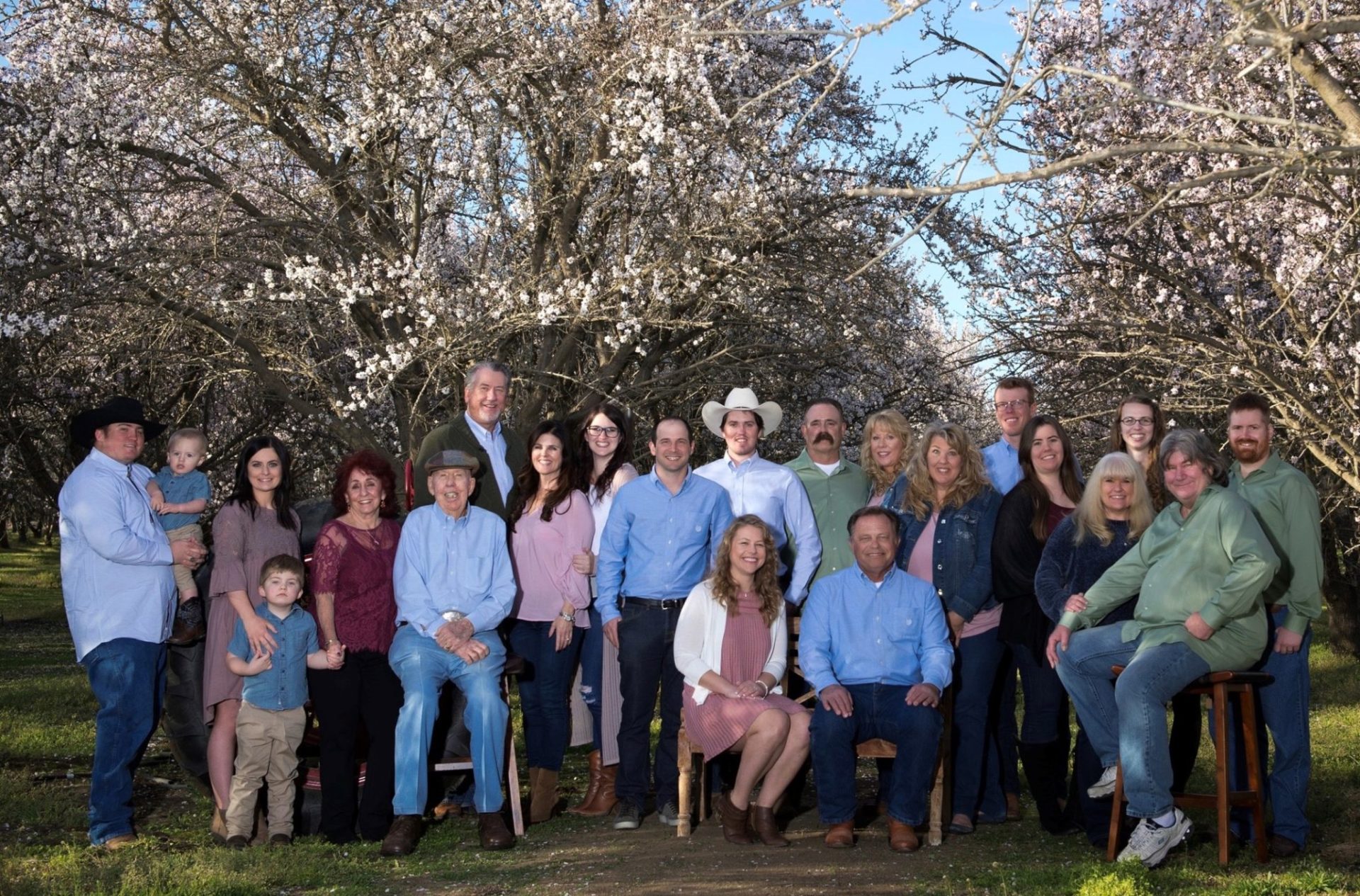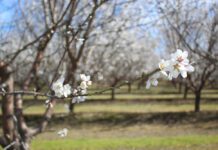
When the Ford dealership in Shafter, Calif., closed years back, Larry Starrh joked to his Dad Fred Sr., “Maybe we should buy it and turn it into a coffee shop?” When his dad agreed, the response took Larry by surprise. However, the Starrh family is no stranger to trying new things, being innovative with their resources and giving back to their community.
Now, the old Ford dealership is home to Tin Cup Coffee and the Ford Theatre. The Starrh family partnered with a local coffee company to establish a hometown favorite and a community gathering place. The Ford Theatre is an outlet for the Starrh family to engage in their love of theatre and to lend a place for local children to participate in plays, acting camps and even attend concerts.
The Starrh family provided this community haven after decades of hard work and innovation in farming. “If you don’t see your shadow in your field, you will have problems” was a quote Fred Starrh Sr. lived by. Before his passing in 2019, Fred was often found walking fields and looking for unique ways to make their farm better. Fred fell in love with the romanticism of watching his cotton fields grow and following them through their life cycle.
“He enjoyed the beginning to end process of turning his crop into something people loved. The boards and industry Fred was involved in allowed him to follow the cotton crop from field, mills, manufacturing plants, garment stores and watch his harvest come to life,” Larry reminisced on the foundation of farming that his Dad built.
Innovation runs deep in the Starrh family. As Starrh & Starrh Farms grew over the years, Fred looked for further ways to innovate and bring his family back to the farm. Larry recalls a time in the late 1970s while he was doing theatre work on the coast, his father called him and asked, “Are you done playing? Do you want to come back to the farm now?” In 1982, Fred expanded the farm and partnered with his two sons Fred Jr and Larry, as well as his son-in-law Jay Kroeker. At their peak, the four partners farmed 8,000 acres of cotton and in the 1980s they started experimenting with 300 acres of almonds.
Grounded in Innovation
“Dad was always an innovator and pushing the envelope. We were looking to try something new and be less dependent on labor,” Larry said. He said his Dad had the foresight to be ahead of the times with farming issues and knew they needed to be innovative and rely less on water and labor.
“Wanting to try something new in the mid 90s, we planted an almond orchard on a 20-by-12-foot spacing. We saw the extra space between the younger orchards and wanted to produce a larger crop and do it sooner,” he said.
There was plenty of opposition to this new way of farming the Starrh family was experimenting with. “Everyone was telling us it was a bad idea; all the diseases that could come with the close plantings, they will stop producing faster if they are too close. But Dad’s idea was if we could get yields up early to help pay off the investment quicker, it might work in the end.”
The tighter spacing orchard was on the west side of Kern County, where the afternoon breeze and low humidity enabled the trees to be less susceptible to disease. The tighter spacing allowed Starrh to utilize mechanical pruning and rely less on labor during an otherwise labor-intensive practice.
“The 5-year-old trees produced a huge crop, and the price of almonds went up at the same time. All of the sudden, it was profitable to be in the almond business,” Larry stated. They learned a few lessons to adapt further and make changes as needed, like switching in drip irrigation for the microjet system they originally installed.
Altering as they needed and continuing to look to innovation helped Starrh to further progress. “We changed the pattern to a 20-by-18-foot pattern in the next almond planting. It would be a better option for moving forward. To this day, though, that original field is one of our highest-producing orchards to date.”
Larry said it just happened to work out in that area, noting that given different circumstances in a different climate or soil type, it might not have worked out the same way.
As they evolved in farming, Starrh & Starrh Farms found ways to innovate with harvesting as well. “Dad would get so frustrated at harvest with all the sweepers blowing dust and making so many passes around the orchards. We built blowers that would blow two to three windrows into one larger windrow. Then the harvester wouldn’t have to make as many passes.” Larry said this foresight for minimizing passes and looking to harvest efficiencies wasn’t being done much at the time. “Now, the big V-sweepers have come out and made the same process much more efficient.” Larry recalls his Dad always coming up with smart ways to minimize their labor with mechanical innovations. By minimizing water and labor, the Starrh family was able to continue farming on the westside of the valley, where it was generally more expensive than farming closer to town.
As water became more expensive, the Starrh family evolved away from the row crops that built their farming legacy and into diversity of tree crops. In the late 1990’s, the Starrhs planted pistachios in the fields around Shafter.
“It is challenging to farm almonds near town, next to houses that aren’t familiar with agriculture. Pistachios allowed us to minimize our farming impact around town,” Larry said.
Almonds helped the family evolve into the nut industry, where they are able to make economical use of water and their resources, but pistachios have given them diversity and longevity in farming. Today, the family farms 4,000 acres of almonds and 2,000 acres of pistachios.
Larry said they have to look at each block or parcel of land differently and maximize its profitability. “We planted one block that was separate from the others in Independence almonds. One variety in the field allows us to limit our need for bees, only require one harvest, and for us to not move equipment as much.”
These simple changes help the farm be successful. “Another block that is not near any of our other fields, we planted in pistachios. We put in a water recharge system to take advantage of excess flow water from the district.”
The greatest challenge to the family farm? Larry said, “It is all about water. If we had enough water, we wouldn’t be looking at solar or exploring ways to supplement how to utilize our acreage. Now we are looking at how to minimize our farm footprint and better manage our water supply.”
As land uses change due to lack of water, agriculture land is going to look much different in the future. The Starrh family is figuring out how to adapt and innovate with the changing regulations and lack of resources.
Larry said water has and will continue to be the limiting factor for their growth. “We’ve been farming on the westside since the 70s and we have understood the water shortage for years. Now that pool of water has more hands grabbing at it. That makes water more expensive. We as growers, have to take advantage of water banking and recharge projects.
“Dad used to say, water was to farm with. If you aren’t going to farm with it, you shouldn’t be using it. But that just isn’t the case anymore,” Larry said. “We have to rethink the look of farming on a broader perspective. The dynamics of farming are hard, and we have a legacy we are trying to provide.”















